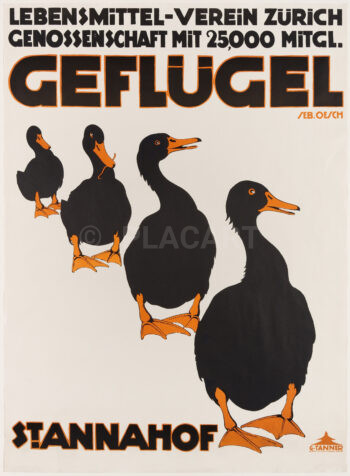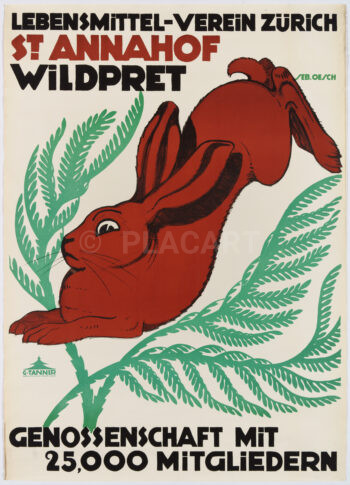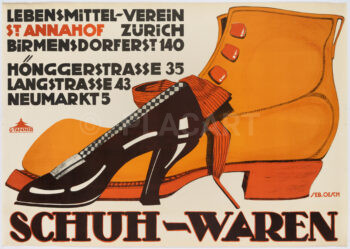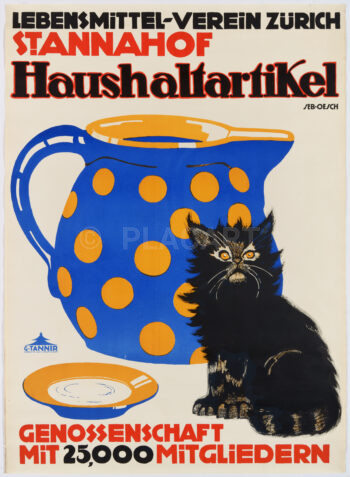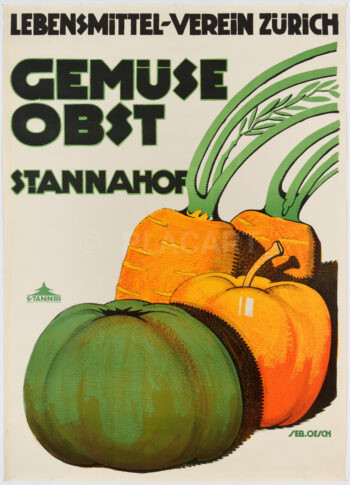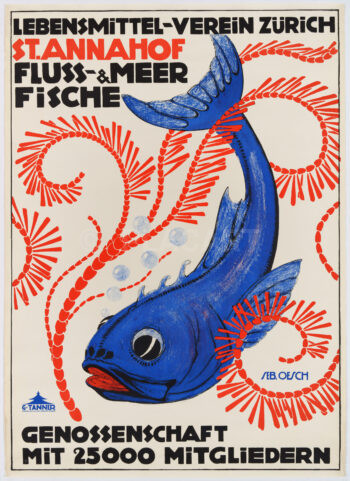| Creator | Sebastian Oesch |
| Printing year | 1914 |
| Sheet size (cm) | 100×72 |
| Printing technique | Lithograph |
| Printer | Polygraphisches Institut, Zürich |
| Condition | A |
| Asking price | 2'500 CHF |
| Categories | Animal, Food | Drinks | Tobacco, Household & Department Stores, Zurich |
Original Vintage Poster from a six-part series (“Fruits and Vegetables”, “Venison”, “Fish” etc.) which St. Galler Sebastian Oesch designs in 1914 on the occasion of the opening of the St. Annahof at Zurich’s Bahnhofstrasse.
Its beginnings go back to 1877 when the cooperatively organized Vegetable Association is formed in Zurich – because of the progress of industrialization women often start working in factories as well and no longer have the time to cultivate vegetables for family consumption. The Association wants to put an end to the increasing prices connected to intermediate trade: By buying directly from producers and waiting with the fine distribution until in the city. Only a year later it becomes the Food Association of Zurich which opens its first store in 1880 before becoming a producer itself to supply members with bread, meat and coffee from own production and even offer firewood, oil, and coal. In 1914 the diversification reaches a new peak when in St. Annahof, set up at best Zurich location, even household items and shoes are being offered.
In 1969 the Food Association Zurich is merged into Coop, after Migros Switzerland’s largest retail and wholesale company – though St. Annahof is still the most representative sales place of Coop (just a few corners further of PLACART, by the way…).
And Oesch? After an apprenticeship as an embroidery artist – back then there were not a great many other options in Eastern Switzerland if one wanted to pursue an artistic career – he stays in Berlin and Weimar throughout 1912/13 before working as a lithographer in Zurich. As he’s soon leaving for Algiers and further on Paris (where Amedeo Modigliani draws him) there is no time for him to design more than – at least as far as I know – only one more Poster. Following his return in 1916 for medical issues, he moves to Appenzell, where he devotes himself to its landscape and people. He dies in 1920 from the (Spanish) flu, not even having reached 27 years of age.

